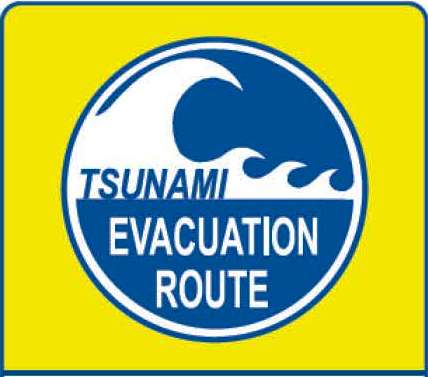-
Our Community
-
- Our Community About Florence City Newsletter News & Recognition Events & Activities City Calendar Florence Events Center Calendar Chamber Calendar RiverCal Siuslaw Library Calendar Schools Siuslaw School District Lane Community College
- Airport City Projects Directory Doing Business Health Care Resources Library Local Media Rainfall Report Transportation Parks & Trails Directory
- Public Safety City of Florence Police Lane County Sheriff's Office Oregon State Police US Coast Guard - Siuslaw Station Western Lane Fire & EMS Authority Organizations Florence Area Chamber of Commerce Florence Events Center Florence Senior Center Port of Siuslaw Siuslaw Vision
-
- Doing Business
-
Welcome Visitors
-
- About Florence Community Amenities Airport Florence Events Center Library Parks & Trails Directory Public Art Senior Center
- Eat, Shop, Stay & Play Florence Area Chamber of Commerce Move Your Business
- Events & Activities City Calendar Siuslaw Library Calendar Chamber Calendar Florence Events Center Calendar
-
-
Inside City Hall
-
- City Council City Services A-Z Commissions and Committees City Projects Directory Agendas and Minutes Florence News ADA Facility Code of Conduct
- Administration Administrative Services City Manager's Office City Recorder Economic Development Emergency Management Finance Human Resources Municipal Court Urban Renewal (FURA) Utility Billing Florence Events Center Police
- Community Development Building Code Enforcement Planning & Zoning Public Works Airport Parks Stormwater Streets Wastewater Water Media Inquiries
-
-
Helpful Resources
-
- Apply for a Job Apply for a Board or Committee Contact the City Council Contact City Staff Check City Social Media Download Forms & Applications Find a City Code
- Find Transportation Get a Business License Get a Noise Variance Get Email Subscriptions Hold a Special Event Locate City Offices Pay My Utility Bill Pay My Court Fine
- Report a Code Violation Report Storm Related Issues Request a Police Report Request a Public Record Reserve a Park View Bids & RFPs View the Calendar
-
Oregon coast now fully mapped for tsunami dangers
Oregon coast now fully mapped for tsunami dangers
Coast is safer for summer beach season after four-year mapping and outreach effort reaches milestone
Portland, Oregon: Beachgoers this summer should pack not only their sunscreen and favorite novel, but also a tsunami evacuation map. For the first time, Oregon’s entire coast has maps showing where to evacuate in the event of a tsunami. This information could save your life and those you love.
A catastrophic Cascadia earthquake and tsunami is a matter of when, not if. But our state is now more tsunami-ready than before. The Oregon Department of Geology and Mineral Industries (DOGAMI) has completed its work under a federal grant to create a new generation of tsunami maps and to educate vulnerable coastal communities how to prepare.
“We’re the first generation in Oregon to fully understand the threat from earthquakes and tsunamis,” said Governor John Kitzhaber. “This project has brought coastal communities together to become more prepared, thanks to federal funding, state expertise in mapping and outreach, and a local sense of responsibility. Coastal residents want to live with peace of mind and also let visitors know they’re open for business and will know where to go if a tsunami strikes,” Kitzhaber said.
Knowing where to go means understanding where high ground is, including the nearest tsunami assembly area. DOGAMI developed a total of 131 new maps, including 89 new tsunami inundation maps (TIMs) and 42 new evacuation maps; the latter are available free as pocket-sized brochures. The attached fact sheet explains where to get new maps and how they were developed.
“These new maps and the State’s outreach have definitely made our county safer,” said Gordon McCraw, Tillamook County emergency manager. “Several areas conducted their very first tsunami evacuation drill, and some have had more drills since then. Residents and visitors practiced their evacuation routes to high ground, and folks really worked well together,” McCraw said.
The program has also helped an additional 14 communities to become TsunamiReady, a designation by the National Weather Service recognizing cities and counties who strengthen their local tsunami plans and communications. Communities will have fewer fatalities and less property damage if they plan before a tsunami happens. (An additional seven entities, from fire districts to school districts, earned TsunamiReady Supporter status.)
“After Japan’s devastating tsunami two years ago, we’ve been working hard to finish our maps and conduct outreach to coastal areas,” said Vicki McConnell, State Geologist. “I want to thank NOAA for funding this work and our local partners
– from fire chiefs to ham radio enthusiasts – for their leadership in getting our coast ready. We can’t prevent a tsunami
but we can prepare for one.”
Maps and more information at www.OregonTsunami.org
Contact Information:
Peter Ovington, Geologic Hazards Outreach Specialist
Oregon Department of Geology and Mineral Industries (DOGAMI)
telephone (971) 673-1543
email peter.ovington@dogami.state.or.us
_____________________________________________________
The Oregon Department of Geology and Mineral Industries is an independent agency of the State and has a broad responsibility in developing an understanding of the state’s geologic resources and natural hazards. The Department then makes this information available to communities and individuals to help inform and reduce the risks from natural hazards, such as earthquakes, tsunamis, landslides, floods and volcanic eruptions. The Department assists in the formulation of state policy where an understanding of geologic materials, geologic resources, processes, and hazards is key to decision-making. The Department is also the lead state regulatory agency for mining, oil, gas and geothermal exploration, production and reclamation.

